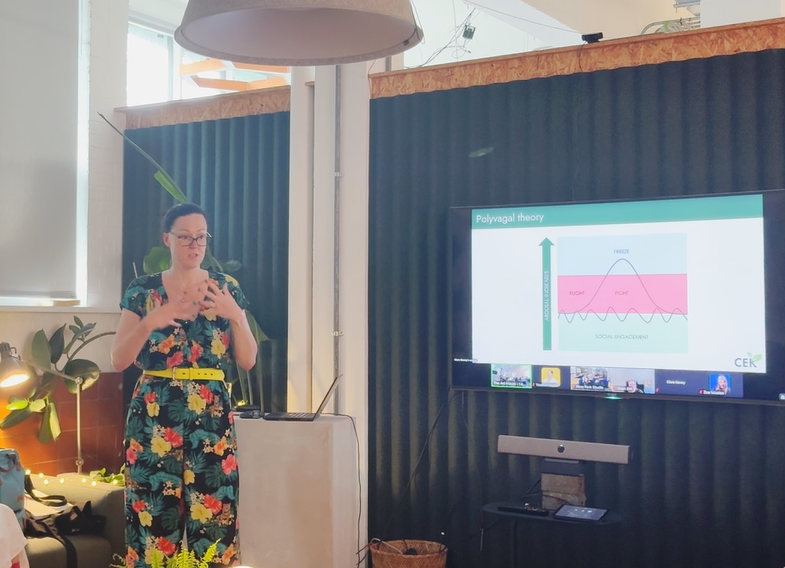How to use data to inform your wellbeing strategy (without the overwhelm)
- Clare Kenny
- Jul 9
- 3 min read
Updated: Jul 12
Let’s be honest, when people say “use data to shape your wellbeing strategy,” it can feel pretty daunting. What data? Where is it? Do we even have it?!! And if we do, what do we do with it?
You’re not alone in feeling this way. Data can be a powerful tool to prioritise what matters, but it doesn’t have to be complicated. Recently, I sat down with research scientist and data analytics expert Dr Matthew Wridley, to unpack how organisations can get started, without needing a degree in data science!
Here’s what we covered...
Start with what you already have
You probably have more useful data than you think. Demographics (like gender, age and location), employee engagement surveys, exit interviews, Glassdoor comments - it’s all insight!
Even basic patterns can point you in the right direction. For example, if your workforce is 70% women, prioritising menopause or pregnancy loss support might make sense. You don’t need a sophisticated analytics tool to make meaningful, informed decisions.
Be brave in your questions
Many wellbeing survey questions are too vague to be useful. “Someone cares about my mental health” might sound positive, but it doesn’t tell you much.
Braver questions get better answers. Ask directly: “Do you feel emotionally supported at work?” “Does your manager check in with you in a meaningful way?” “Have you considered leaving due to stress or burnout?”
Yes, these questions might open up tough conversations. But that insight is already there, you're just choosing to acknowledge it and act on it.
Use qualitative feedback as real data
Data isn’t just numbers. Open text boxes in surveys, exit interview comments, and feedback from listening groups can be gold.
You don’t need a full analytics team to analyse it. Look for recurring themes, keywords, or emotional tone. Use simple tools like Word Clouds or even a manual coding exercise to spot patterns.
Ask the real attrition question
Most exit surveys ask “Why are you leaving?” But the better question is: “What made you start looking for a new job in the first place?”
That’s the insight that helps you address the root causes of attrition. Make space for open, honest answers, and collect the data early enough to act on it.
Focus on what matters to your senior leaders
Data is a brilliant way to get senior buy-in, but only if you translate it into language they care about.
Think...
Costs, profits, market shares
Attrition and retention rates
Absence data
Recruitment and onboarding costs
Engagement scores
Productivity or performance metrics
If you can show that burnout or lack of support is impacting these areas, it becomes a business priority, not just a ‘nice to have’.
Benchmark meaningfully
Benchmarking isn't just about comparing to others. It's about tracking your own progress.
Ask the same questions every 6 -12 months. Spot patterns, test interventions, and show progress over time. That’s where benchmarking becomes a powerful tool for improvement.
Keep it simple
You don’t need to gather every piece of data under the sun. Get clear on what you want to know first, then ask the right questions.
As Matt said, “If you’re collecting everything without knowing why, you’re just creating a lot of work for yourself.”
And finally... actually act on what you learn!
The very act of asking brave questions and showing you’ve listened can boost engagement and trust. Employees become less cynical when they see their feedback being used to shape real change.
So start small. Be honest. And be willing to iterate. A wellbeing strategy informed by real insight, however simple, will always go further than one built on assumptions.
Want more practical insights on leadership, culture and wellbeing? Subscribe to my newsletter for fresh thinking, real stories and tools to help your people thrive! https://www.clareekenny.com/subscribe




Comments